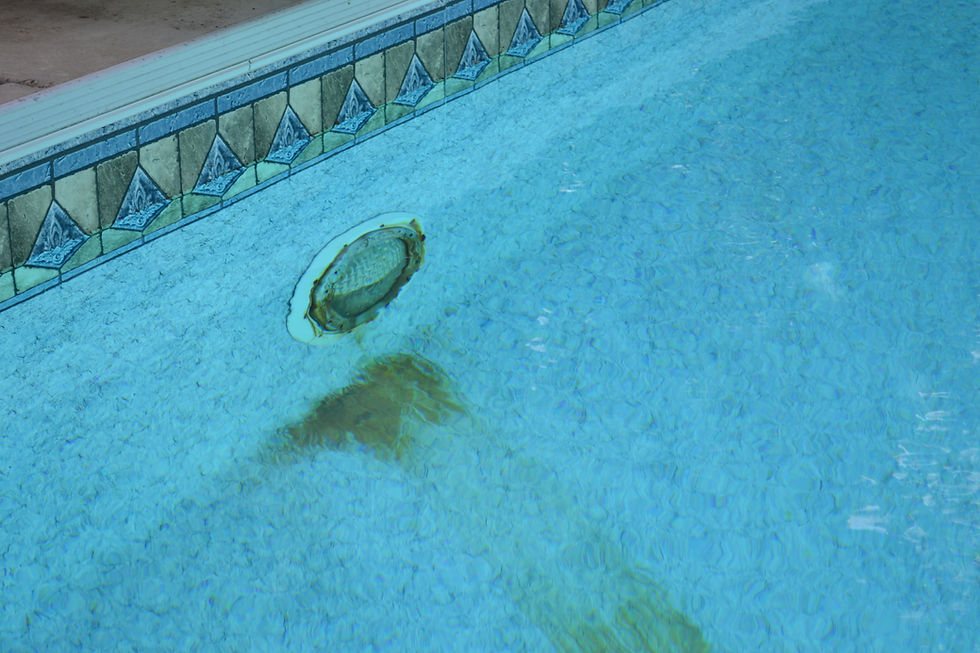Saltwater vs. Chlorine Pool
- Gabby Pugliese

- Aug 21, 2022
- 2 min read
With the recent shortage of chlorine tablets, many customers have considered switching to saltwater pools. There are pros and cons to both saltwater and chlorine pools. Take a look at the breakdown below to decide which is better suited for you!
Chlorine
A chlorine pool works by adding chlorine to your pool water through a chlorine feeder. By adding chlorine tablets to a floater or chlorinator, chlorine is circulated into your water. While tablets are used to help maintain a balanced chlorine reading, it is recommended to add shock to a chlorine pool weekly.
Pros:
Chlorine pools are standard for a reason. Chlorine is widely available, proven to be safe and effective, and fairly inexpensive.
Lower upfront cost. Chlorine has a fairly low upfront cost for a season's worth of chemicals.
Several to choose from. Chlorine comes in many different forms—from liquid to granules—and can be added in a few different ways.
Cons:
Chlorine pools can be irritating to swimmers. Some swimmers are sensitive to chlorine which can lead to itchy eyes and skin, as well as ear infections.
Require more maintenance. While both chlorine and saltwater pools need to be shocked, chlorine pools require shock more often.
More chloramines, more problems. Chlorine produces more chloramines, and needs to be shocked more frequently than saltwater pools. But even then, using this sanitizer is usually asking for more irritating water than that of a saltwater pool.

Saltwater
A saltwater pool requires a saltwater or chlorine generator, which is also commonly called a salt cell. A saltwater pool creates its own chlorine on-site through electrolysis. When you add pool-grade salt to a saltwater generator, it runs that salty water through two electrically charged plates, which converts it to chlorine.
Pros:
Gentler, softer water. Although saltwater pools use the same type of chlorine that you’d find in any chlorine pool, the fact that there’s less of it, that it’s super stable, and that its complemented by salt all work together to make gentler, softer water. The result? No stinging eyes, skin, ears, or throat.
Save money over time. The salt that you’ll need to add to your system is very inexpensive. While the upfront cost of a salt cell is pricey, you could potentially save money over time.
Less maintenance. With a saltwater pool, the amount of chemicals you need to maintain are reduced, and can be looked at less frequently, up to every two weeks. You’ll still need to vacuum your pool and check that everything is operating properly, as well as routinely clean your equipment.
Cons:
Salt cell needs routine cleaning. Throughout pool season, your salt cell will need to be cleaned several times in order for it to work properly and efficiently.
Salt cells need to be replaced every 3-8 years. A salt cell is a consumable part. Exactly how long it lasts will depend on the cell you purchase and how you use it.
Initial equipment cost. Converting your pool to a saltwater generator costs between $400 and $1,800 and the installation can be $300 to $500, unless you can do it yourself.





Kaiser OTC benefits provide members with discounts on over-the-counter medications, vitamins, and health essentials, promoting better health management and cost-effective wellness solutions.
Obituaries near me help you find recent death notices, providing information about funeral services, memorials, and tributes for loved ones in your area.
is traveluro legit? Many users have had mixed experiences with the platform, so it's important to read reviews and verify deals before booking.